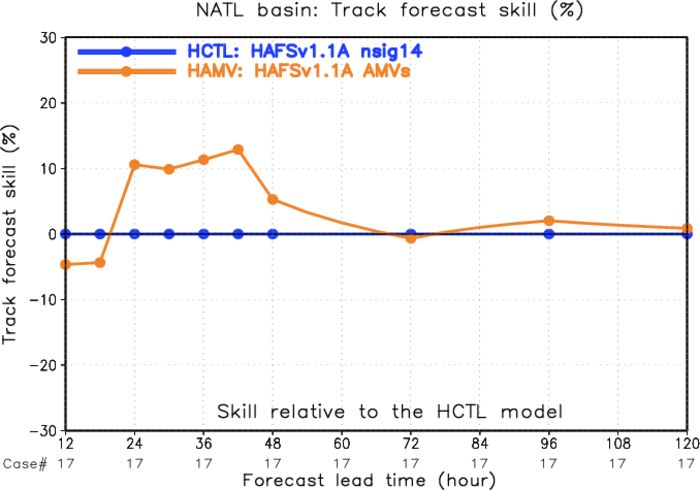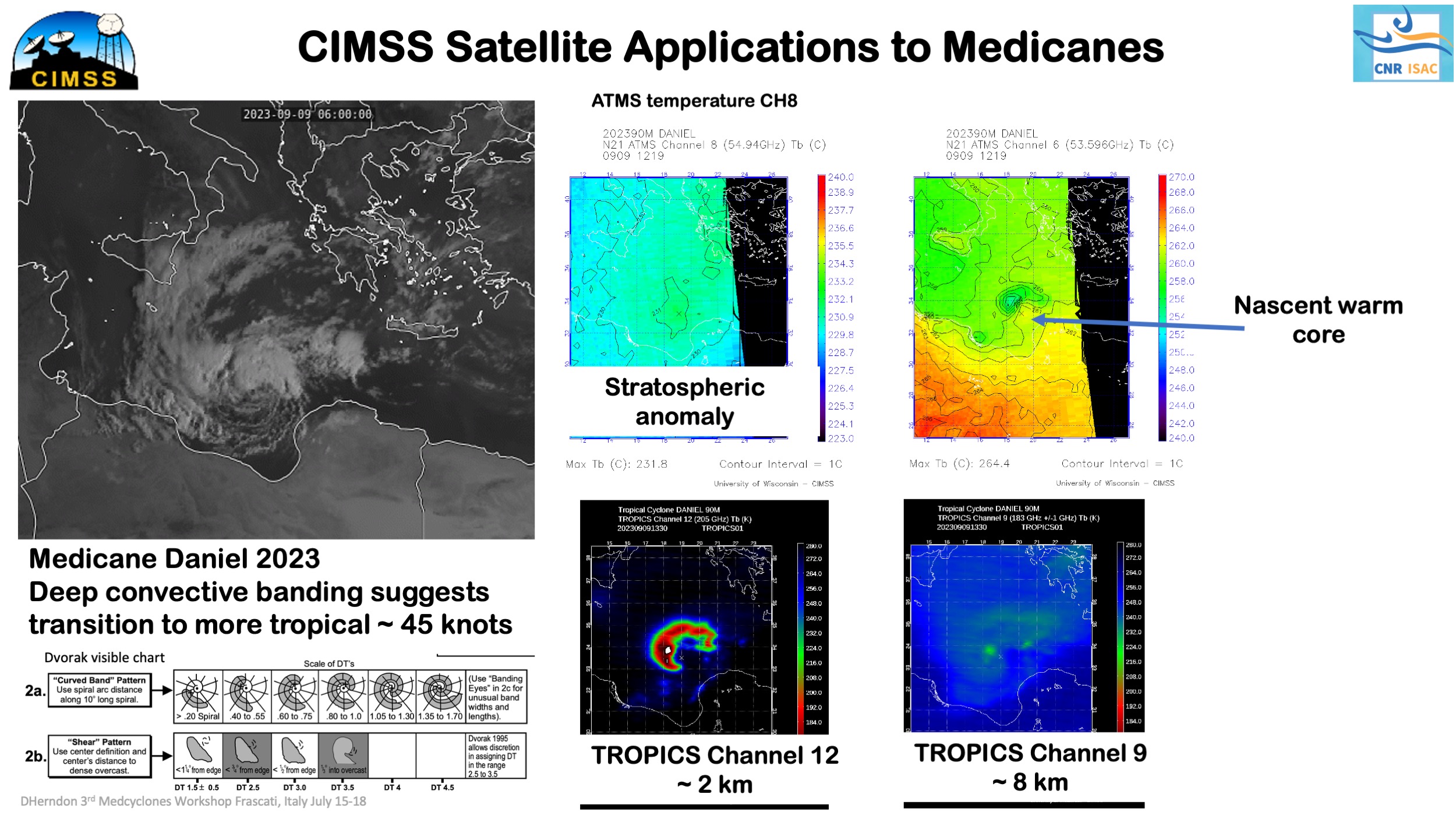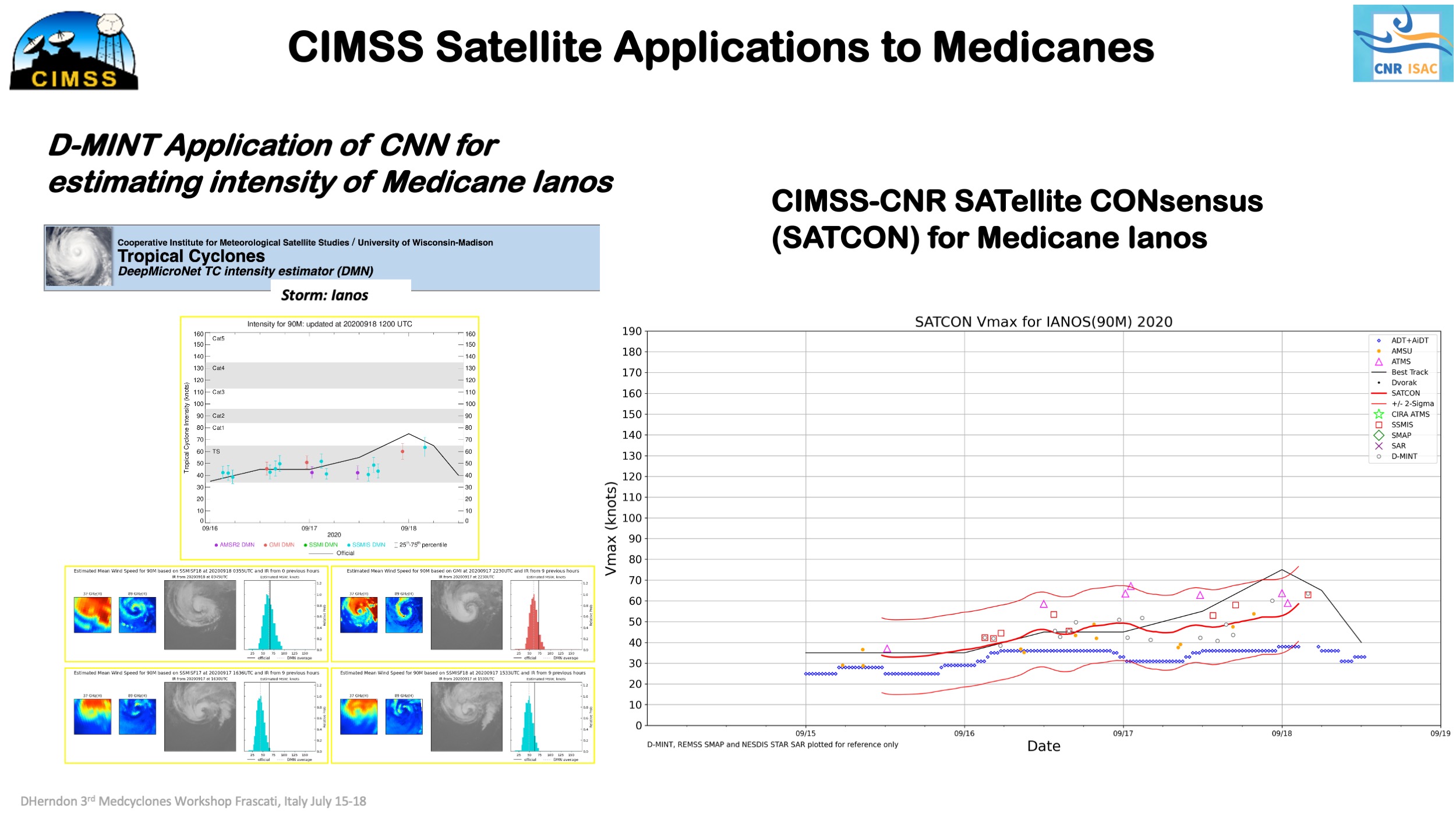
[ Archive ]

 |
CIMSS-NOAA Weekly Report [ Archive ] |
 |
CIMSS-NOAA WEEKLY HIGHLIGHTS FOR THE WEEK ENDING JULY 19, 2024
DATA, INFORMATION, AND USE-INSPIRED SCIENCE:
GOES-R Hurricane-Scale AMVs go into Operational Assimilation: Ultra-high-resolution atmospheric motion vector (AMV) fields derived from GOES-16 and -18 meso-scan imagery during tropical cyclones are now being operationally assimilated. The datasets are derived using methodologies tailored to capture rapidly-changing hurricane-scale flows. The product was developed at the Cooperative Institute for Meteorological Satellite Studies (CIMSS) as part of GOES-R Risk Reduction, Proving Ground and the Algorithm Working Group (AWG) winds application team. Datasets are being processed and delivered by CIMSS in real-time to NCEP whenever a GOES-16 or GOES-18 meso-scan sector is targeting a tropical disturbance or cyclone in the Atlantic or East Pacific basin. The data are then being ingested and assimilated into the operational Hurricane Analysis and Forecast System (HAFS) during tropical cyclone events. An example of the impact the data can have on the HAFS model forecasts is shown in the figure below. The hurricane-AMV product is being transitioned into operational production by the AWG team at NESDIS/STAR. (C. Velden, CIMSS, 608-262-9168, D. Stettner, CIMSS, 608-262-8850, S. Wanzong, CIMSS, 608-263-1950, J. Daniels, STAR)
 (Click image to enlarge)
(Click image to enlarge)
Figure: Improved track forecast skill by the HAFS model during Hurricane Lee (2023) with the inclusion of the enhanced hurricane-scale AMVs derived from GOES-16 meso sector scans.
FUTURE OUTLOOK:
AWARDS AND RECOGNITION:
TRAVEL AND MEETINGS:
CIMSS Scientist Derrick Herndon Presents at Medcylones Workshop: The third MedCyclones Workshop and Training school was held at the European Space Agency European Space Research Institute (ESA-ESRIN) in Frascati, Italy July 15-19. CIMSS scientist Derrick Herndon was an invited speaker and presented the latest research on satellite applications for analysis of tropical cyclones with a focus on applying these techniques to Medicanes. This work continues a collaborative agreement between CIMSS and Giulia Panegrossi at the Council for National Research- Institute of Sciences of the Atmosphere and Climate (CNR-ISAC) funded through the European Cooperation in Science and Technology (COST) to promote training and the transfer of satellite algorithms to improve Medicane forecasts. (D. Herndon, CIMSS, 608-262-6741)
 (Click image to enlarge)
(Click image to enlarge) (Click image to enlarge)
(Click image to enlarge)
Presentation at Scientific Forum on Flash Drought: Presentation at Scientific Forum on Flash Drought: Cooperative Institute for Meteorological Satellite Studies (CIMSS) research professor Jason Otkin gave an invited presentation at the Food and Agriculture Organization of the United Nations Scientific Forum on Flash Drought. The scientific forum was held in Islamabad, Pakistan, on 10 July 2024, with several international experts attending remotely. Otkin’s presentation, entitled “Flash Drought: From Early Warning to Early Action” discussed recommendations for a flash drought early warning system and different tools that can be used to monitor the evolution of flash droughts. He also served as an invited panelist during a discussion session. (J. Otkin, CIMSS, 608-265-2476)
TRAINING AND EDUCATION:
MEDIA INTERACTIONS AND REQUESTS:
SOCIAL MEDIA AND BLOG Posts:
SSEC and CIMSS Scientists in the News:: Scientists at the University of Wisconsin-Madison (UW-Madison) Space Science and Engineering Center (SSEC) and the Cooperative Institute for Meteorological Satellite Studies (CIMSS) provide expert interviews, imagery and case studies to promote science and satellite imagery. This week: CIMSS Satellite Blog contributor Scott Lindstrom published the following case studies: "Polar2grid and AOD and NDVI" (July 18); "NGFS and the Lone Rock fire in Oregon" (July 18); "LightningCast probabilities over southern Wisconsin" (July 16); "Creating AMSR-2 imagery to overlay on top of GOES imagery" (July 16); "The Cow Valley fire in rural Oregon" (July 12). Read more at the CIMSS Satellite Blog (https://cimss.ssec.wisc.edu/satellite-blog/). (S. Lindstrom, CIMSS, E. Verbeten, SSEC, 608-263-4206.
 (Click image to enlarge)
(Click image to enlarge)
Figure: GOES-18 Day Fire RGB, 1626 UTC on 15 July 2024.
PUBLICATIONS:
OTHER:
| Archived Weeklies Page | Submit a report item |